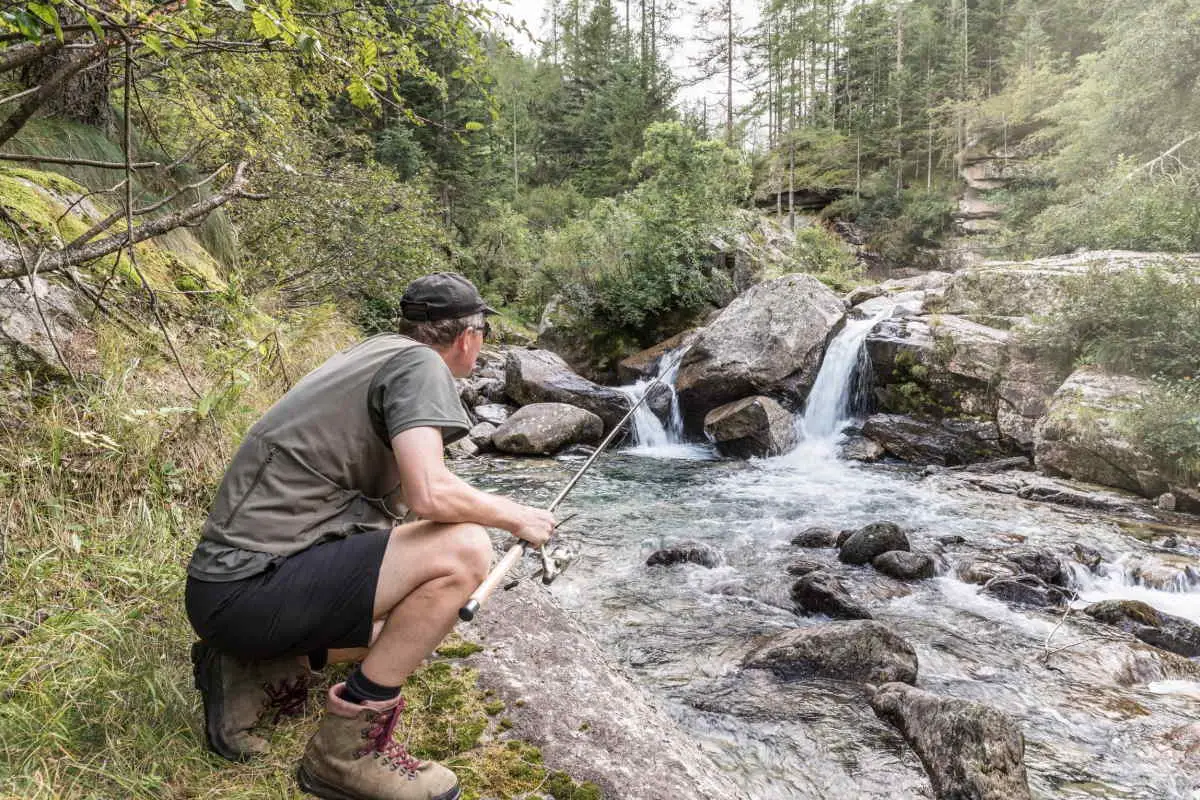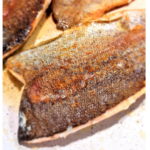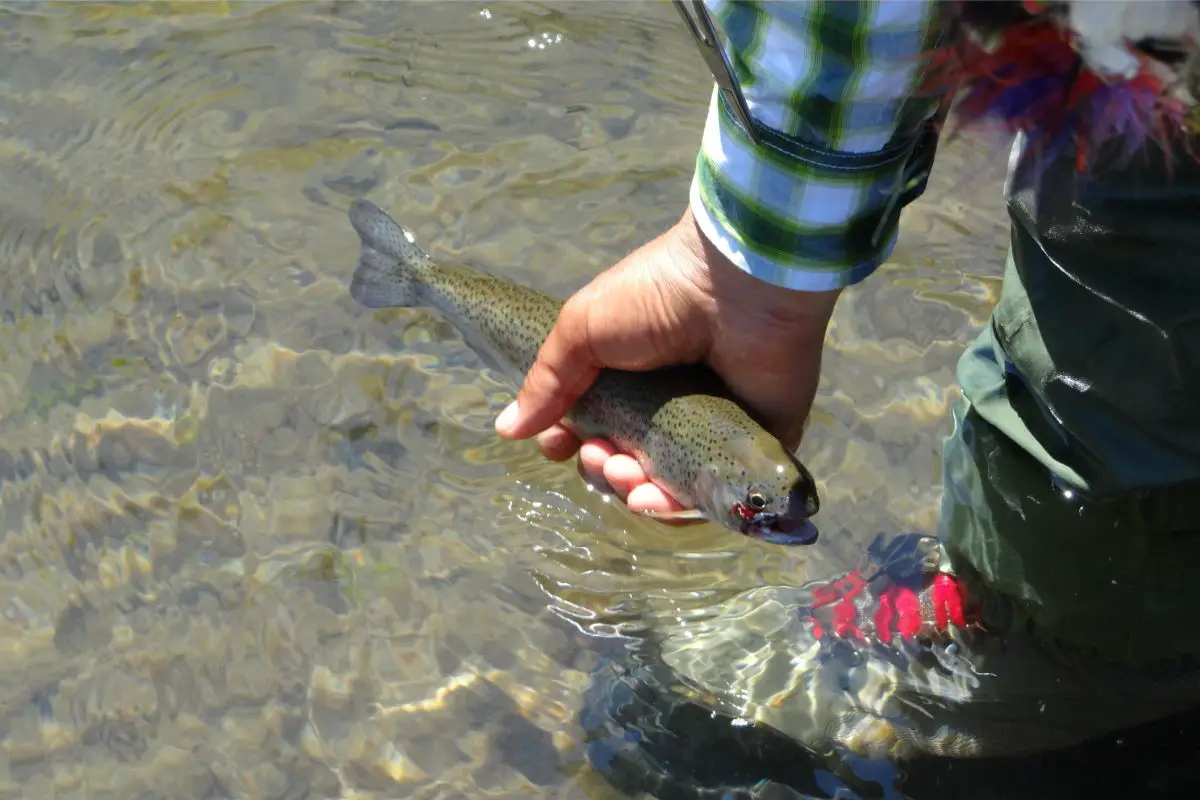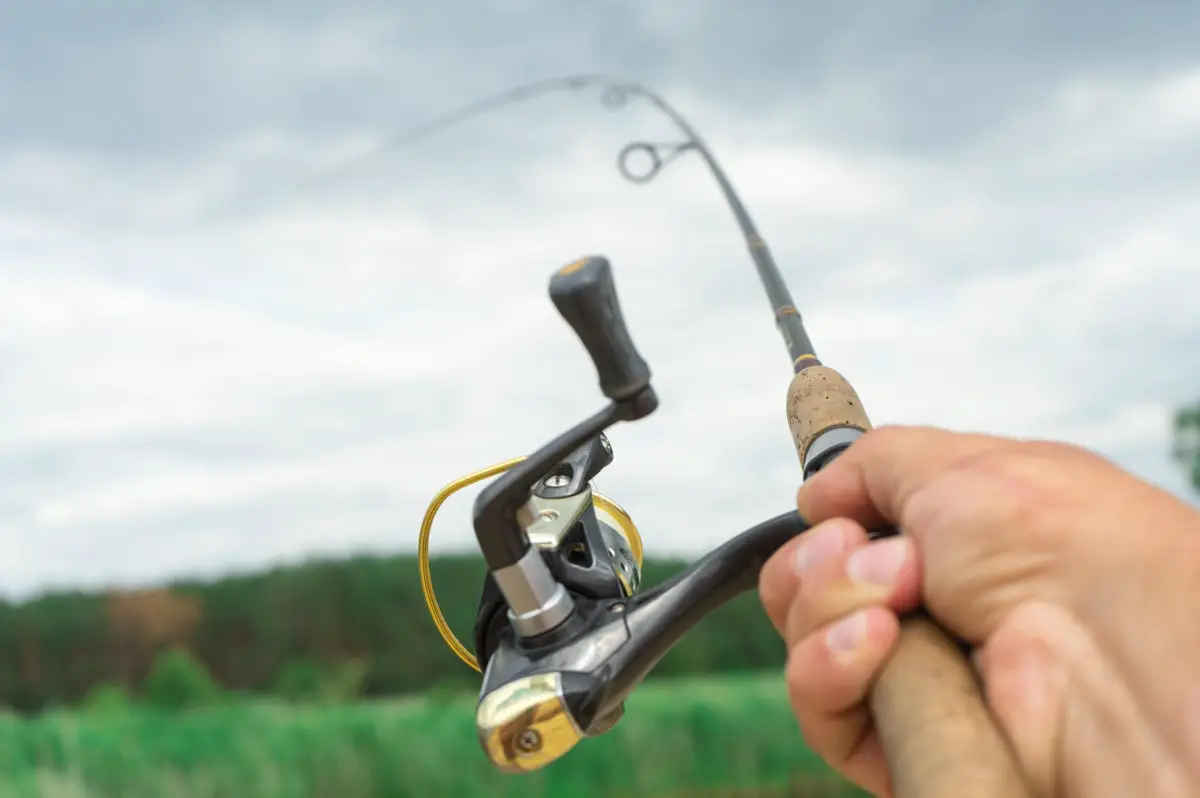Rainbow trout are one of the most common fishes found in North America. They’re beautiful fish that come in various colors. Anglers can typically recognize them by their red stripes, dark spots, and white underbellies.
Rainbow trout are native to cold, freshwater lakes and rivers that drain into the Pacific Ocean from Mexico to Alaska. They’re also found in North American rivers, west of the Rocky Mountains, and northeast Asia. Because of their popularity and resilience, they’ve been planted in many freshwater lakes and large ponds for recreational purposes across the US.
Hunted and grown worldwide, these easily found fish are trendy among anglers due to their catchability compared to their brown trout cousins. The remaining article will explore where rainbow trout live, what their habitats are like, and in what bodies of water you can find them. Keep reading to find out more about these fascinating fish.
What Regions Do Rainbow Trout Inhabit?
Rainbow trout are prevalent throughout the world. These stunning fish prefer a cold temperature and fresh, clean water. Rainbow trout cannot thrive in pollution and will perish if their habitats become contaminated by unfiltered water.
Rainbow trout are native to Pacific Ocean drainages from Mexico, North America, and northeast Asia. North American rivers with cool water temperatures west of the Rocky Mountains are peak places for rainbow trout.
Although rainbow trout can live at a higher temperature than brown trout, they still thrive in colder waters. Coldwater has more oxygen than warmer bodies of water, and because rainbow trout are sensitive to pollution, the more oxygen they get, the more comfortable they are.
That is one reason why rainbow trout live in Pacific Ocean drainages and North American freshwater rivers. These streams have lower temperatures and are the perfect environment for rainbow trout and their offspring.
Rainbow trout are native to these regions; however, they have been introduced worldwide due to their popularity in sport fishing.
What Is the Difference Between a Freshwater and Ocean Rainbow Trout?
Rainbow trout and steelhead are the same trout species; the only difference is where they choose to migrate. Not all rainbow trout turn into steelhead, but they all potentially can.
Steelheads are rainbow trout that migrate to bodies of saltwater but live the first few years in freshwater. Rainbow trout, on the other hand, live their entire lives in freshwater.
Steelheads get bigger than rainbow trout because of more significant food supplies in the ocean. They also can eat larger fish and other species that can’t be found in streams, which allows them to expand in size.
What Kind of Habitat Do Rainbow Trout Need?
Rainbow trout are easily adaptable to different types of environments or habitats. They are categorized in two different varieties depending on whether they migrate to the ocean. Ocean sea-run trout strains are known as steelhead, and smaller freshwater types that live in rivers and lakes are referred to as rainbow trout.
Rainbow trout prefer a cold environment. These fish thrive in cold waters with natural gravel bottoms and coverings such as downed trees, large stones, and a swift current. However, Rainbow trout can also thrive in cool lakes found in the cascade mountain range of North America and other parts of the US.
Rainbow trout are carnivores and don’t eat plants. They feed off of insects, smaller fish, and mussels. That can cause rainbow trout to feed off of native species almost to the point of elimination. That needs considering when introducing rainbow trout to new environments.
As I stated above, these beautiful fish are sensitive to pollution; thus, fresh cold streams and clean waters are ideal for rainbow trout habitats.
Do Rainbow Trout Live in Lakes?
Rainbow trout thrive in cold waters, such as in mountain streams and rivers. However, there are also some regions in North America where anglers catch rainbow trout for sport and food.
Rainbow trout live in lakes in Northern America, mostly west of the Rocky Mountains. Most rainbow trout that live in lakes are hatchery planted. However, some rainbow trout that live in lakes have become landlocked due to the installation of dams.
Generally, rainbow trout stay at a depth of 60 to 200 feet (18.28 to 60.96 meters) while living in lakes. The reason is that the deeper the water, the colder it is, which generates more oxygen.
Rainbow trout usually migrate through streams and rivers to reproduce if they are not sterile. Steelhead spawn in the fall but most rainbow trout spawn in the spring. Spawning happens in shallow waters with a lot of gravel and loose rock.
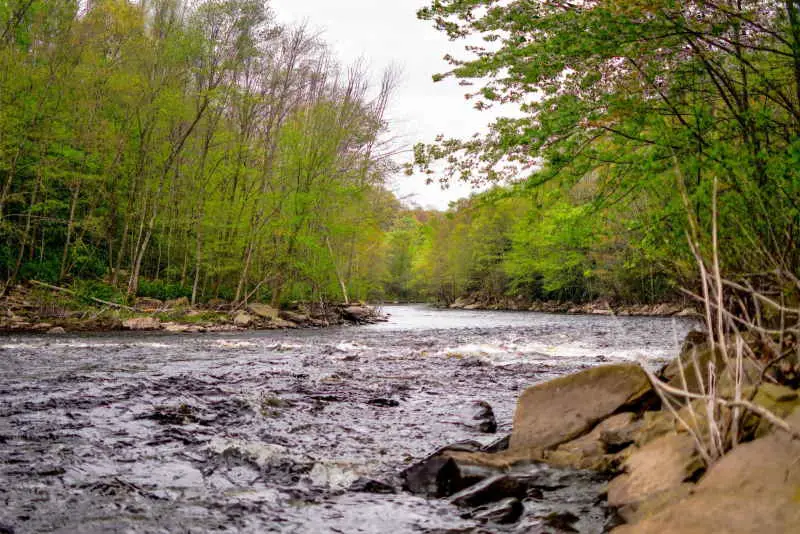
Do Rainbow Trout Like Fast- or Slow-Moving Water?
Rainbow trout prefer fast current, cold, and clean streams when picking their swim route. They flourish in mountain streams with clean, cold water and survive easier when their waters are highly oxygenated and cold.
However, if the bodies of water they are swimming in become too choppy or rough, rainbow trout will hug the shores to avoid slamming into rocks or trees. They prefer a fast current but also understand water safety.
As stated above, rainbow trout prefer cold waters. During warmer seasons, they usually swim in waters around 45 to 60 °F (7.22 to 15.55 °C). If you are searching for rainbow trout in the summer, you may want to search in deep holes or shaded spots in the river. Also, when lake fishing, try fishing deeper as the temperature increases throughout the day.
Depending on the season and weather, these fish tend to stay in shallow rivers closer to the shore when traveling through fast current streams. The top of gentle rapids where food and oxygen are plentiful are the best environments to find rainbow trout.
Are Rainbow Trout Planted?
Hatcheries that introduce rainbow trout to new environments usually genetically modify these fish to be sterile, so they do not reproduce. Rearing rainbow trout has huge success rates among breeders, producing more than enough fish to stock certain lakes and streams for sport fishing.
Rainbow trout are planted in many lakes, rivers, and streams around the world. One of the reasons these fish are produced is because it allows additional opportunities for sport anglers to catch them. It also helps the native trout population thrive.
Rainbow trout females produce anywhere from 1000 to 6000 eggs at a time. That is a massive amount of offspring; this can lead to overpopulation and invasion in certain areas if these fish take over.
Why Are Rainbow Trout Planted?
Planting allows anglers to fish for sport and food without hurting the local environment. The bulk of trout planting is generally done in freshwater lakes and large ponds.
It also does not affect the local and native fish and animal species that already live in the waters. Usually, state or regional Fish and wildlife departments will manage a stocking program that includes a schedule you can monitor.
Many private property owners will create large ponds with artificial streams for fish farming habitats. Planting allows owners to populate their waters without affecting the natural ecosystem in their area.
Can Rainbow Trout Become Invasive?
Rainbow trout can reproduce at a fast rate. That can significantly affect the natural habitat of aquatic life in certain areas.
Rainbow trout are not known for being highly invasive. However, they’re the cause for some species being endangered, such as some varieties of frogs and some fish. Sterile rainbow trout are planted to prevent populations from becoming invasive.
Rainbow trout are predatory fish, meaning they eat other living things such as fish and insects. They do not eat plants or algae. That is why they can affect aquatic life to the point of extinction.
Rainbow trout became a popular sporting fish in the late 1800s for fishing and food. However, that damaged the natural ecosystem of many species. Rainbow trout are now regulated to improve population and the environment.
Conclusion
Rainbow trout are excellent sporting fish for anglers and novice fishers alike. They’re plentiful and thrive in various types of climates. They’re planted in many areas and are usually sterile to prevent them from becoming invasive.
These meat-eaters can prey on native fish and damage ecosystems, so it’s best to modify them to prevent spawning. They’re also delicious to eat and easy to catch. They are good practice for beginner anglers to learn from, and fishing them is beneficial for environmental reasons.
